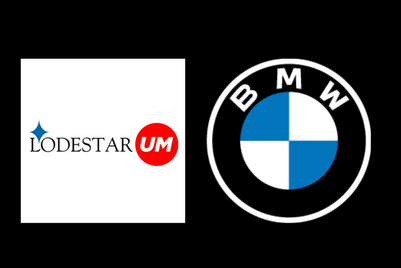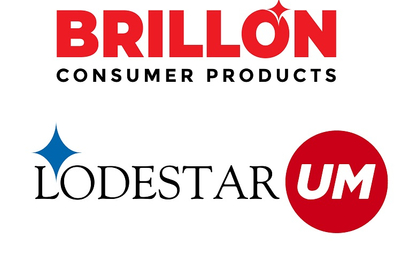
Lodestar UM, part of IPG Mediabrands, has unveiled ‘Full Colour Media’, a new media proposition that promises to boost brand growth in an era dominated by AI and algorithms. An omnichannel model, Full Colour Media aims to address the rising concern of brands becoming indistinguishable in the market.
The agency has developed the proposition following a brand-building study it carried out. The study provided findings based on data from over 10,000 brands and 50 lakh data points. Lodestar UM has created ‘Brand Patterns’, a proprietary model based on these findings. By recognising and exploiting unique brand characteristics, Brand Patterns aim to help brands differentiate themselves and achieve growth.
“In a world dominated by algorithm-driven media, it challenges the outdated linear models and black-and-white decision making to drive real ‘difference’ and brand growth. Full Colour Media is designed to combat the existential threat of brands becoming bland. It blends the visibility of high-quality media impact with the vibrancy and variability of smaller, deeper touchpoints, creating a spectrum of media stories that come together to drive brand growth,” said Susan Kingston-Brown, global brand president, UM.
Lodestar UM’s Full Colour Media proposition focuses on 3-Vs—visibility, vibrancy, and variability. Visibility, the primary driver of brand growth accounting for 64% of the impact, includes metrics like attention and ad awareness. Vibrancy, covering metrics such as social engagement and word of mouth, aims to speed up growth by connecting brands to culture and social trends. Lastly, supporting incremental growth by generating customer value, the variability element covers positive impressions and quality. These elements, according to Lodestar UM, play distinct roles to develop a brand’s unique identity and drive its market success.
The agency carried out the research in partnership with associate professor Felipe Thomaz from the University of Oxford’s Saïd Business School. Observing how these three components interact within a brand’s ecosystem, the study suggests that many brands, despite their distinct characteristics, fail to exploit their unique Brand Patterns since they employ nearly identical media strategies. By spotting and applying the right mix of the 3-Vs, brands can unlock more effective growth strategies, the study points out.
Moving away from the conventional linear marketing models, Lodestar UM’s new proposition provides a dynamic view of how brands should engage with consumers today. For instance, the traditionally popular funnel model may prove simplistic from the perspective of today’s changing marketing requirements. Rather than depending on such a model, Full Colour Media proposition adopts a more tailored approach to media planning that accommodates complexity and variability. The study shows that brands with a deeper understanding of their unique pattern can assure a substantial and lasting impact within their categories.
“Lodestar UM’s Full Colour Media approach takes charge of steering brands through the new disruptive media landscape as consumers transition to AI-sourced answers and innovative user interfaces. It brings together the power of data with human ingenuity for brands to unlock their unique formula for growth,” said Aditi Mishra, CEO, Lodestar UM.
Providing category-specific insights, the research shows different growth drivers across industries and regions. For example, in the USA, payment services and credit cards categories benefit more from ‘variability’ than the industry average. In the ‘alcoholic drinks’ category in Australia, while ‘visibility’ emerges as the crucial factor for beer brands, ‘variability’ plays a bigger role in the growth of wine and spirits brands. While in Mexico, the brands in the cereals, chocolate, and biscuits categories witness an incremental growth from ‘vibrancy’ and ‘variability’, in the case of health and beauty brands in Britain, ‘variability’ is the key element that drives growth.
The Brand Patterns model, according to Lodestar UM, offers predictive insights into how various media strategies and metrics interact to drive brand success. For instance, the study shows that when the vibrancy metrics align with positive outcomes, the effectiveness of visibility metrics increases drastically. The research also reveals how earned media may catalyse the effectiveness of paid media. Full Colour Media, the company mentions combines data-based insights along with human intelligence to craft impactful brand experiences that resonate with consumers.
“Before we push the AI button, we must understand exactly what differentiates a brand so that we can train that AI to work effectively for us. Brand patterns enable us to understand the complexity, nuances and uniqueness of every brand—allowing us to elevate and distinguish them within their category – ensuring our communications deliver a disproportionately positive effect in market,” explained Kingston-Brown.


.jpg&h=334&w=500&q=100&v=20250320&c=1)
.jpg&h=334&w=500&q=100&v=20250320&c=1)

.jpg&h=334&w=500&q=100&v=20250320&c=1)


.jpg&h=334&w=500&q=100&v=20250320&c=1)





.png&h=268&w=401&q=100&v=20250320&c=1)



.jpg&h=268&w=401&q=100&v=20250320&c=1)

